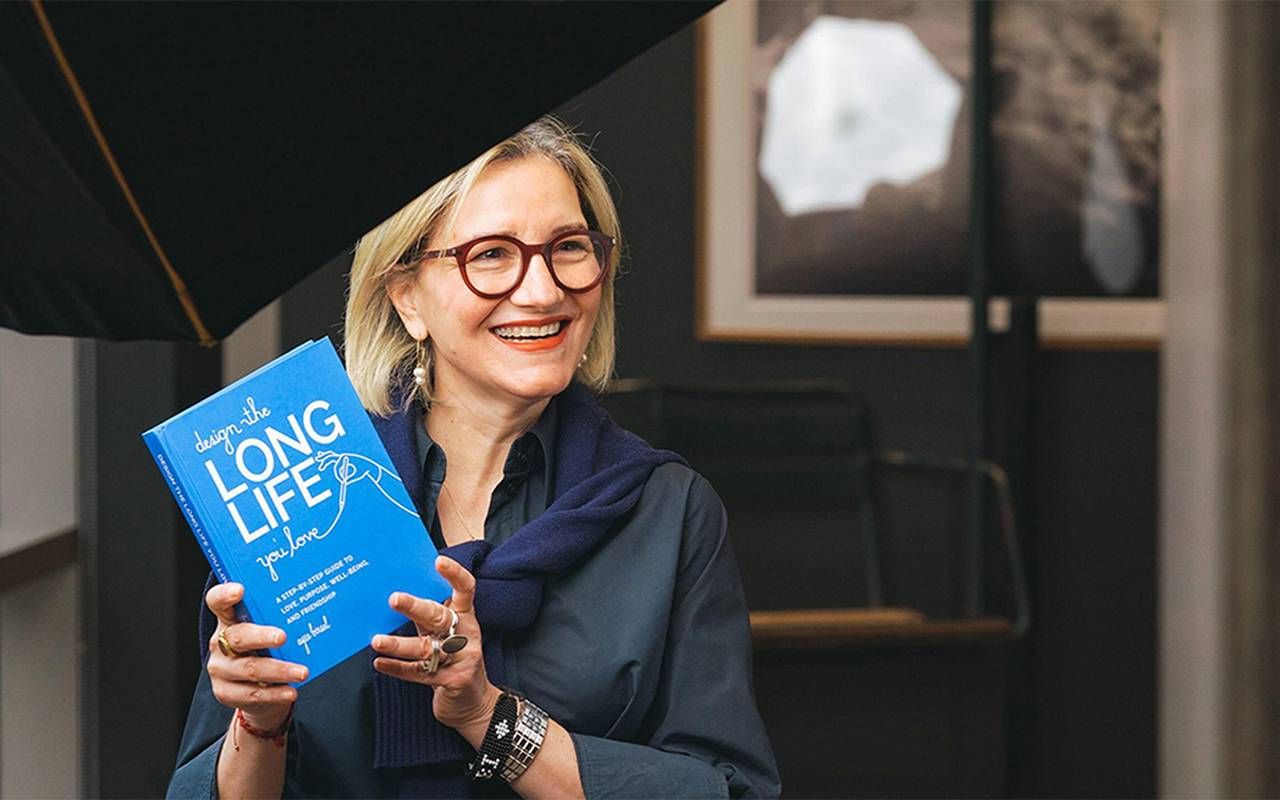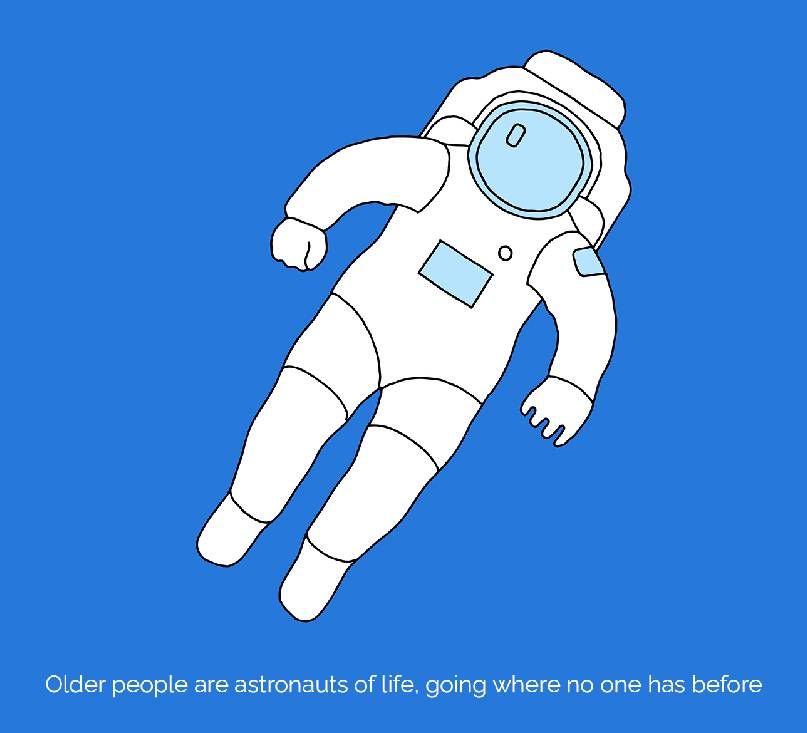Aging with Optimism: Designing the Long Life You Love
Designer and author Ayse Birsel offers tips for planning a long life — whether looking ahead to retirement, an empty nest or starting an invigorating new project
Industrial designer, business coach, and author Ayse Birsel has created products for well-known brands like Target, Toyota and Herman Miller Knoll. Now she is sharing her design process and findings from a year-long co-design research project with participants aged 65+ to help people craft the life they want to live as they age.

"Because people are living longer than ever, they can innovate and find more joy in their lives," Birsel says. This comes down to learning to visualize and create the future they want in four key areas.
"Because people are living longer than ever, they can innovate and find more joy in their lives."
Her book "Design the Long Life You Love, A Step-by-Step Guide to Love, Purpose, Well-Being, and Friendship" provides readers with a clear and creative path to make that happen.
"Longer life is a thrilling, modern opportunity, and like so many parts of life it needs to be thoughtfully designed," Birsel says.
"People can use design principles — like optimism, empathy, collaboration, open-mindedness and holistic thinking — and lessons from the experiences of people who have lived the longest to embark on self-exploration to foster creativity in their next phase of life," Birsel explains.
The following interview has been edited for clarity and length.
Next Avenue: How is your book helpful for people over 50?
Ayse Birsel: There is so much negative talk and pessimism around aging. It is estimated that 87% of Americans fear aging. However, our research working with older people — who we called 'astronauts of life' — showed us that there is much to look forward to.
So, I wrote this book to help people think about aging with optimism.

How are things different today?
We now have 20 to 30 more years to live, which is a gift. I wonder if everybody realizes that. So I wanted to make people more aware and say, 'Now you have this gift; what are you going to do with it?'
My point of view is to 'design it' or to live proactively and with intention. I am inspired by an anecdote from a friend in her 80s whose mom lived to be 100. When the mom was in her 90s, she said, 'If I had known that I was going to live this long, I would have done something different, like gone back to school and learned more things.' So it is that idea that you could do something with this new era of time.
What did you learn from your research with this older demographic?
We had a year-long grant to work with people across the United States who were 65 years old and older. Middle-income men and women came to a session to 'design their life' for a day.
Several findings stood out:
- No matter their age (some of these people were in their 90s), nobody said it was too late. They came in and talked and laughed about their life with so much positivity and optimism. They acknowledged the challenges. In thinking about their life creatively, they also saw so many opportunities.
- The notion of 'Same-Different' was a constant. Because they are older doesn't mean they have changed. To understand them, we had to think of what we want and need: love, purpose, well-being and friendship. But how we each get to our wants and needs is different. This concept sounds simple, but it creates immediate empathy among generations. Our future selves are still going to be interested in the same things. It means our kids can understand us, and we can understand older people. This idea creates continuity across a long life.
How does someone design their next chapter?
Often, a life change propels you into thinking about what you want to do next. That is how it works with designing anything. There is a problem/challenge, and you want to be able to move out of that problem state and into an idea state.
"As we age, many transformations happen across love, purpose, well-being and friendship."
You ask questions, which opens up your mind to different possibilities. You ask: what if?
As we age, many transformations happen across love, purpose, well-being and friendship. The social structures that guide us through our early life recede (going to school, graduating, working, raising a family, etc.) or they are not enough anymore.
People in their 40s and 50s who have been successful come to my sessions asking, 'What is the purpose of my life?' For example, children are going off to college, and there is a social structure for that, but for the empty nester, there are no clear social structures around this time, and they need to be designed.
We learned from our research with older individuals that this is the time to start thinking about self-made purpose, loving yourself more, and feeding your soul because your well-being is more about your soul and spirit than your physicality or intellect. It is a time to make 'fresh friends.'
What are 'fresh friends'?
We know now that social life is vital to health and well-being. Our study showed that as we get older, we lose the chances and the muscle to make new friends, which is what we need most.
Friendship is something you can make, love is something you find, and it gives me great hope. If you can figure out the process to make something (i.e., making food, manufacturing a chair, or friends), you can increase your chances of success.
I call this the friendship factory. Shared interest, shared time and shared places are needed to manufacture friends. This could be an online or physical space. If you can collaborate with people and exchange ideas, that builds trust, and you can see almost every opportunity to get together with people as a friendship factory.
"You ask questions, which opens up your mind to different possibilities. You ask: what if?"
For example, I am an introvert, and it is harder to make friends when you are an introvert. This notion of a friendship factory has made me realize that every place I go — a party, a conference or an educational session — is an opportunity to meet a new and maybe a great friend.
That idea changed my mindset. The goal is to open people to think about their long life differently.
What else did you learn about friendship from older people?
One woman in her 70s said people need to make friends with those nine years older and nine years younger. Intergenerational friendships are essential.
I have a lot of older friends, but I don't nurture young friends. I know how to do that, but I have yet to think about it. So, I am working on that.
How can your design process of deconstruction: reconstruction help people figure out how to create the life they love?
When you are deconstructing, you understand what something is made of. When you deconstruct a life, you figure out what elements make up your life. It takes a complex idea and simplifies it so it is easier to think about.
Through deconstruction, you are breaking down the links you assume are between things, which helps you break your preconceptions. Reconstructing is putting it back together, knowing you can't have everything, so you need to be proactive and intentional about what you want in your life.
"When you wake up in the morning, instead of immediately jumping into whatever you need to do, take five or ten minutes to do something creative."
This is a step-by-step process to do. Between deconstruction and reconstruction is important ideation. You gather inspiration, learn from other people and think of your life differently.
The book provides tools to think about the same things differently so you can open your mind without worrying. You are looking for things that are not in your life or that you need to cherish or avoid.
When you reconstruct, you have clarity of the critical ingredients of your life. Then you get excited about it and figure out how to make these things happen. That excitement of ideas propels you forward.
What if people are not creative?
I have done my process with thousands of people of all ages, and the biggest lesson I learned is that we are all extraordinarily creative. I have seen so many people transform their lives, which is why I keep doing this. They need an accessible, playful process that looks like it can be done, and this process can be done.
How can someone foster their creativity?
When you wake up in the morning, instead of immediately jumping into whatever you need to do, take five or ten minutes to do something creative, such as journaling in a notebook, drawing a flower or picking up a guitar.
Creativity has incredible powers to warm us up for the day. It is a connection to something wonderful, and it turns fear into optimism.
To learn more, join Ayse Birsel for her Virtual Tea, an online intergenerational community, by signing up for her newsletter here.


